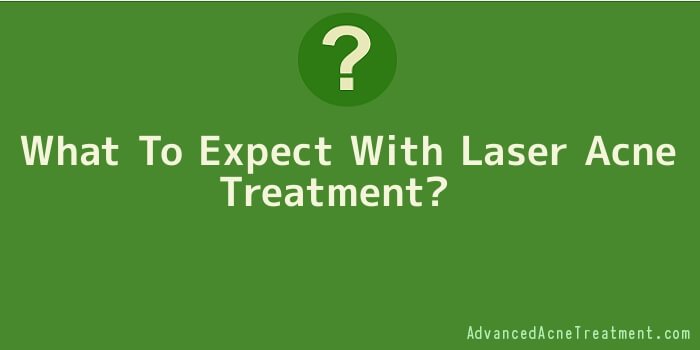
The first step to laser acne treatment is scheduling a consultation appointment at a laser acne treatment clinic. There, the doctor will evaluate your skin and acne, coming up with a treatment plan using lasers.
Laser treatment can be used anywhere you are prone to acne breakouts; common treatment areas include the face, chest, and back. There are different lasers for different acne types, and the dermatologist will determine which to use on your skin.
Once you’ve scheduled your appointment, limit your sun exposure for best results with the laser. Laser treatments do not work as well on tanned skin. You’ll need to continue avoiding sun exposure until several weeks after your last treatment session. On the morning of your appointment, do not apply lotions or makeup to the area to be treated. The skin must be clean for the lasers to work.
Upon your arrival in the doctor’s office, first a cooling gel will be applied to your skin. This will prevent it from becoming burned. You may also be treated with an anaesthetic gel to reduce the pain associated with the procedure. However, laser acne treatment is generally not very painful; many patients describe it as the sensation of a rubber band snapping against the skin.
During the treatment, both you and the doctor will wear goggles to protect your eyes from the laser. The doctor will hold a handheld laser device to your skin. The laser will send pulses of light into your skin, where it kills acne-causing bacteria and shuts down oil production. The entire session will last for less than an hour.
Once the first appointment is over, your skin will be red and a little swollen. This should begin to subside immediately, and it should be completely gone within a few days. Do not irritate the skin by scratching it or scrubbing it.
Other than redness and swelling, there are very few side effects or complications with laser acne treatment. Continue to take care of your skin once the treatment is over. Use plenty of sunscreen; recently treated skin is susceptible to sun damage.
In addition, your dermatologist may prescribe medications for you to take following the procedure. Be sure to follow your doctor’s instructions carefuly with regard to your healing period. You may or may not see immediate results after the first treatment session.
After your skin has healed, you’ll need to decide whether to undergo follow-up sessions. Most patients undergo between three and eight sessions, spaced a few weeks apart. The number of sessions depends on the type and severity of the acne. You can choose to use the same type of laser to target the same acne cause each time, or use several different lasers to target several causes of acne.
